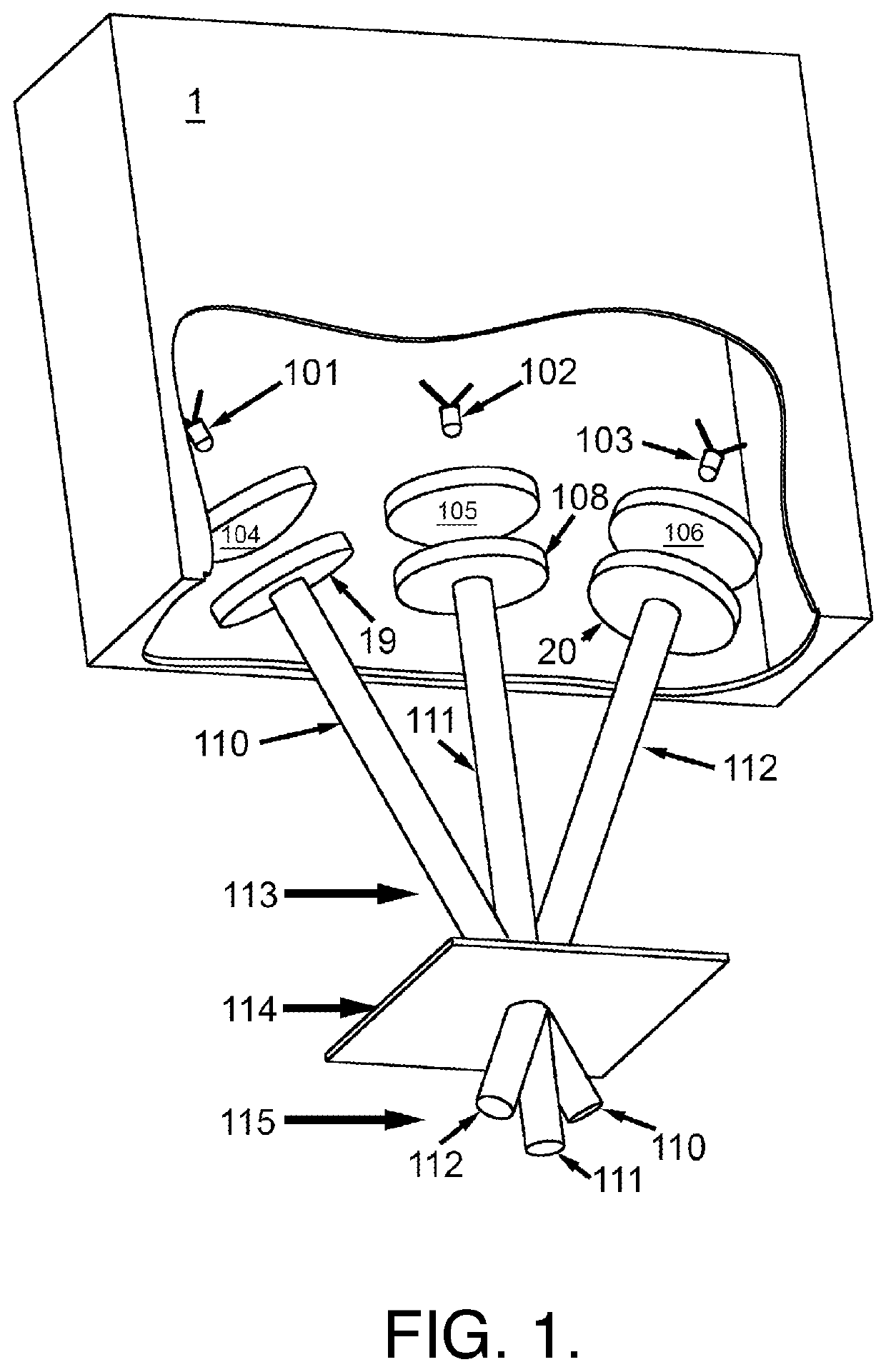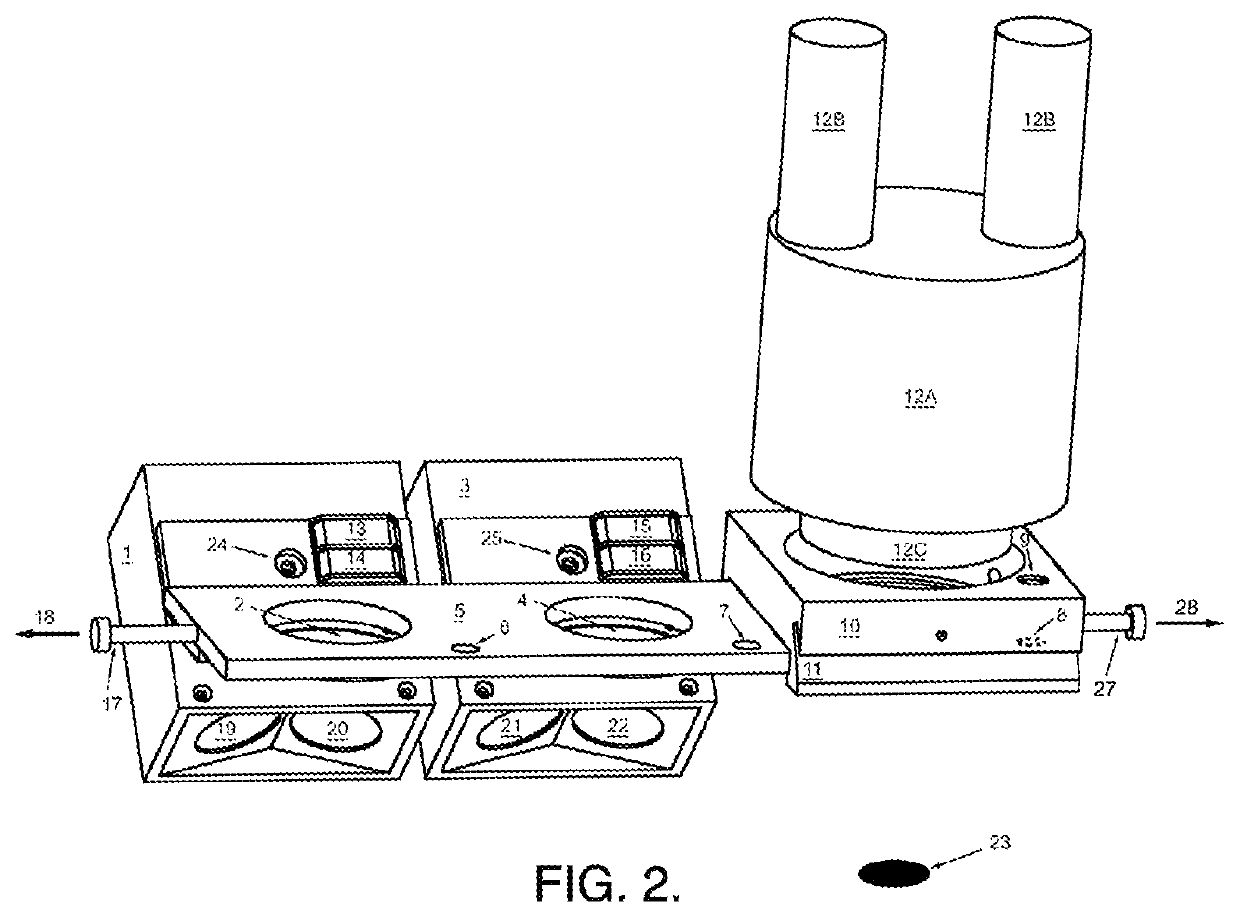High-efficiency oblique illumination system for fluorescence excitation and detection
a fluorescence excitation and fluorescence technology, applied in the field of analytical methods, can solve the problems of system wear, high heat generation, waste of polychromatic light sources, etc., and achieve the effect of increasing the excitation of a bona fide signal, not increasing the background noise signal, and quick and easy chang
- Summary
- Abstract
- Description
- Claims
- Application Information
AI Technical Summary
Benefits of technology
Problems solved by technology
Method used
Image
Examples
Embodiment Construction
[0011]The current invention solves the problems associated with using electromagnetic radiation sources such as LEDs to excite and analyze fluorescence. Throughout this patent application, reference is made to “light”, Light Emitting Diodes (“LEDs”), and “fluorescence”; however, it is to be understood that “light” is a metaphor and meant to include all electromagnetic wavelengths, including those which cannot be perceived by the human eye, and “LEDs” are just one example of a source of electromagnetic radiation (others include but are not limited to gas discharge lamps, x-ray and magnetron tubes, and a multitude of different types of lasers), and “fluorescence”, though this word typically refers to the visible or invisible radiation emitted by certain substances as a result of incident radiation of a shorter wavelength such as X-rays or ultraviolet light, in this application is expanded and refers to any detectable phenomenon that results from excited molecules, for example it could...
PUM
| Property | Measurement | Unit |
|---|---|---|
| peak wavelength | aaaaa | aaaaa |
| peak wavelength | aaaaa | aaaaa |
| dominant wavelength | aaaaa | aaaaa |
Abstract
Description
Claims
Application Information
 Login to View More
Login to View More - R&D
- Intellectual Property
- Life Sciences
- Materials
- Tech Scout
- Unparalleled Data Quality
- Higher Quality Content
- 60% Fewer Hallucinations
Browse by: Latest US Patents, China's latest patents, Technical Efficacy Thesaurus, Application Domain, Technology Topic, Popular Technical Reports.
© 2025 PatSnap. All rights reserved.Legal|Privacy policy|Modern Slavery Act Transparency Statement|Sitemap|About US| Contact US: help@patsnap.com



